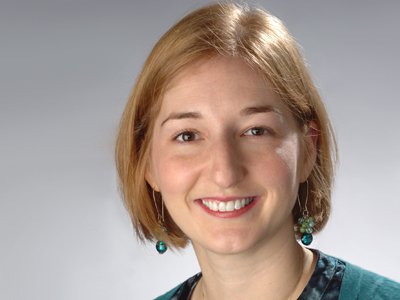Explore how physics predicts cancer cell behavior at Orange Central lecture
Researcher examines cellular ‘traffic jams’ for clues to cancer treatment targets

While traffic jams are a well-known feature in the evening commute, all kinds of systems can “jam”—including the body’s cells. As part of Orange Central 2017, M. Lisa Manning, physics associate professor, will explore how the physics of jamming in the body influence cancer cell behavior.
Manning will lecture on “The Physics of Cancer” on Friday, Oct. 6, at 3 p.m. in the Physics Building, room 202/204. The lecture is free and open to the public.
“Understanding the fundamental biological and physical principles underlying cancer tumor invasion is a key driver of innovation in cancer detection and treatment methods,” Manning says.
Manning researches the physical properties of disordered materials, where the atoms or particles that make up the material are jumbled instead of crystalline. These systems can change from fluid to solid through a “jamming transition,” like how a cup of sand can easily be poured, but walking on a beach provides solid footing. Recently, her group has discovered that collections of cells, including those from cancerous tumors, can behave in a similar way by either maintaining a solid clump, or loosening up to flow. She is currently working with researchers and clinicians to see whether this transition allows dangerous cells to move throughout the body as cancer metastasizes.
Manning first got interested in disordered materials after attending a public lecture on the mathematics underlying traffic jams. “Since then, I've been hooked on trying to understand what other systems ‘jam,’” she says.
Previous research in the Manning lab suggests that the two-dimensional relationship between a cell’s perimeter and its area can predict whether cancerous cells in a tumor will stay put or migrate. Along with postdoctoral researcher Matthias Merkel, Manning is currently moving this model into three dimensions—and getting a step closer to pinpointing physical properties responsible for cancer cell behavior.
Since joining Syracuse University in 2011, Manning’s work has been recognized by the 2016 International Union of Pure and Applied Physics Young Investigator Prize, a Simons Investigator award, a Sloan Fellowship and a Scialog award, as well as several teaching awards.
Additionally, Manning develops and promotes outreach programs to recruit and retain diverse members in science, technology, engineering and mathematics—or STEM—fields. These efforts are supported by NSF CAREER and Cottrell Scholar awards.
“Quite frankly, I am really lucky to be able to do something I love that is meaningful to society. But not everyone is as lucky as I am, because women and some minorities are significantly underrepresented in fields like physics,” Manning says, noting that one way to combat this imbalance is by speaking to diverse groups, like the audience at the upcoming Orange Central lecture:
“This is one way to share the ideas I love, and dispel the stereotype that all scientists should look or act a certain way, as well as the myth that scientists work by themselves on problems that aren't of interest to society.”
